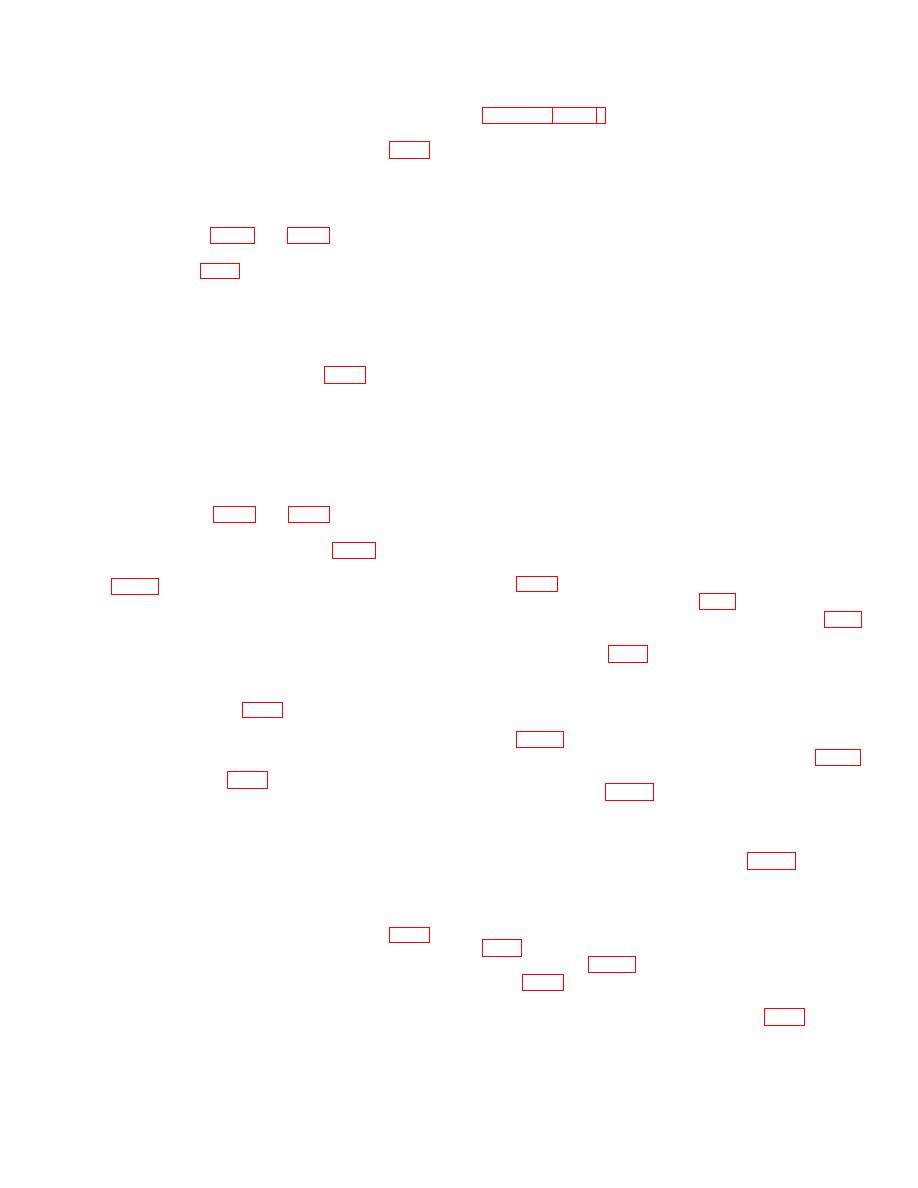 |
|||
|
|
|||
|
Page Title:
Reverse-Range Clutches, Left and Right |
|
||
| ||||||||||
|
|
 TM 9-2520-249-34&P
which causes the reversing action described in
Thrust washers (26 and 26.6) position the pinions and
absorb end-thrust forces. The spindles are pressed into
the carrier and locked in place with pins (26.8).
springs (17), acting against reaction disk (32), seat the
(3) Planetary carrier assembly (23, FO-6)
piston in its cavity in the bevel gear housing.
is supported by ball bearing (28) which is mounted on
the cross shaft. The outer circumference of the carrier
2-13.
Brakes and Brake Apply Components, Left
is splined to the internal splines of left reverse-range
and Right
clutch hub (19).
a. Description
(1) Right and left brake assemblies are
(1) When the reverse-range clutch is
included in the transmission. Most components of one
engaged, carrier (24, FO-6) is prevented from turning.
assembly are identical to those of the other assembly.
Thus, the torque imparted by sun gear assembly (47) to
The components which are not identical differ only in
pinions (26.3) causes them to rotate on spindles (26.7)
that they are specifically designed for right- or left-side
which are held stationary within the housing. The
installation. The brake assemblies are located in the
rotating pinions, therefore, drive the ring gear (brake
right and left cavities of the bevel gear housing. The
hub 45) in the direction opposite to that of the sun gear.
brake apply components, located in the top cover
(2) Driven brake hub (45, FO-6), (reverse
assembly, are just above their respective brake
ring gear) is splined to steer planetary carrier (58) which,
assemblies. The brakes are mechanically applied. The
in turn, is splined to output shaft (54) Thus, the output
apply mechanism is connected, by external linkage, to a
shaft rotates in reverse at a speed reduction ratio of 2 to
single, foot operated pedal. The pedal and external
1. When the reverse-range clutch is released, reverse-
linkage are parts of the vehicle. The brakes are applied
range carrier (24) rotates freely.
together, through the external linkage. Their only
function is to slow, stop or hold the vehicle. Because of
2-12.
Reverse-Range Clutches, Left and Right
the close similarity of the right and left brake
components, only the left brake will be described below.
NOTE
(The left brake components are illustrated in foldouts 6,
7 and 13).
The left reverse-range clutch (FO-6)
(2) The brake includes stationary cam
and the right reverse-range clutch
(35, FO-6), rotating apply cam (42), twelve steel balls
(FO-9) are identical.
Therefore,
(43), six external-tanged disks (4, FO-7), six internal-
description of one clutch will serve
splined disks (3), and apply disk (2) Brake hub (45, FO-
to describe the other.
The
6)is integral with the reverse range ring gear. Reaction
description below is keyed to foldout
plate assembly (5, FO-7) is the reaction member for the
6, the left reverse-range clutch.
brake clutch disks as well as the steer clutch disks.
Springs (13) and pins (15) also serve both the brake and
(1) The reverse-range clutch includes six
steer clutch.
internal-splined disks (33, FO-6), six external-tanged
(3) Brake apply components include shaft
disks (34), reaction disk (32), piston (3), retainer
(74, FO-13), cam (88), bearing (87), rollers (90), body
assembly (9), hub (19), eight pins (8), and twelve
assembly (79), and adjusting screw (40, FO-6)
springs (17).
Combined with the brake apply mechanism is brake
(2) Pins (8, FO-6) are held stationary at
signal valve (95, FO-13) and air valve assembly (76),
one end by recesses in the bevel gear housing and at
both of which are activated by lever (86).
the other end by recesses in the brake stationary cam.
b. Operation
These pins engage disks (34) and reaction disks (32)
(1) When the brake is applied, the vehicle
and prevent their rotation. Internal splined disks (33),
linkage causes brake apply shaft (74, FO-13) to rotate
positioned alternately between disks (34), engage hub
clockwise (right shaft rotates counterclockwise) Cam
(19). Piston (3) travels in a cavity, machined in the
(88) is splined to shaft (74) and is eccentric to it.
bevel gear housing.
Bearing (87), being mounted on and concentric with the
b. Operation. When the reverse-range clutch
cam, applies pressure on the end of adjusting screw (40,
is applied, hydraulic pressure behind piston (3, FO-6)
pushes the piston against reaction disk (32). The
apply shaft 74, FO-13) rotates, brake rotating apply cam
reaction disk compresses all twelve clutch disks against
(42), FO-6) moves in a clockwise direction, as viewed
brake apply stationary cam (35). This grips the internal-
from the left side.
splined disks and holds them stationary. These disks
(2) Rotating apply cam (42, FO-6) and
engage the splines on hub (19) and thus prevent its
rotation. This locks reverse-range planetary carrier (24)
2-5
|
|
Privacy Statement - Press Release - Copyright Information. - Contact Us |